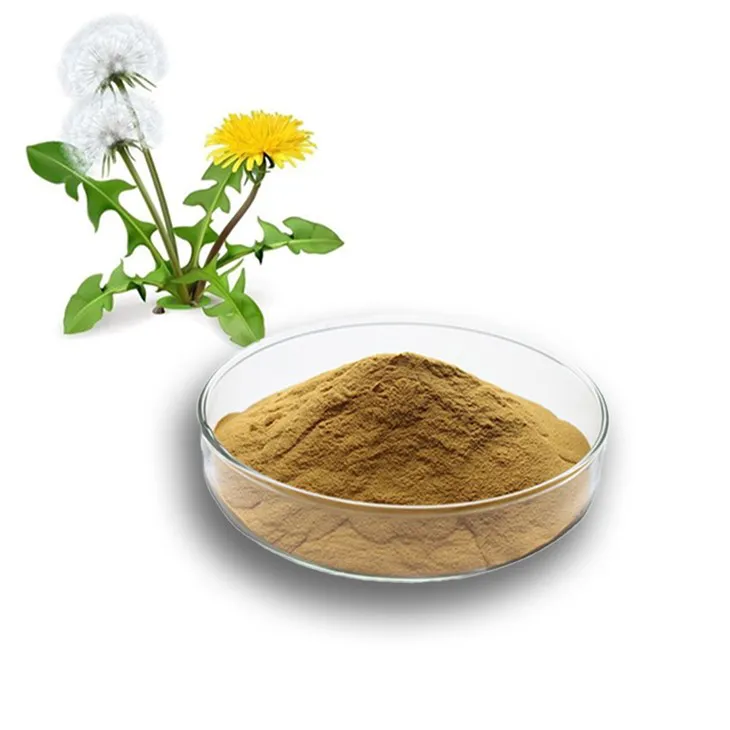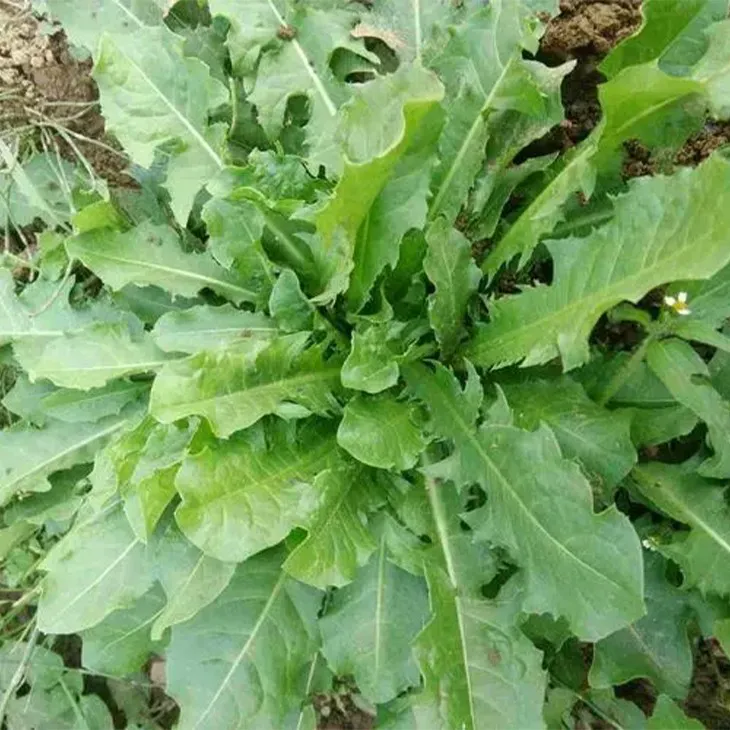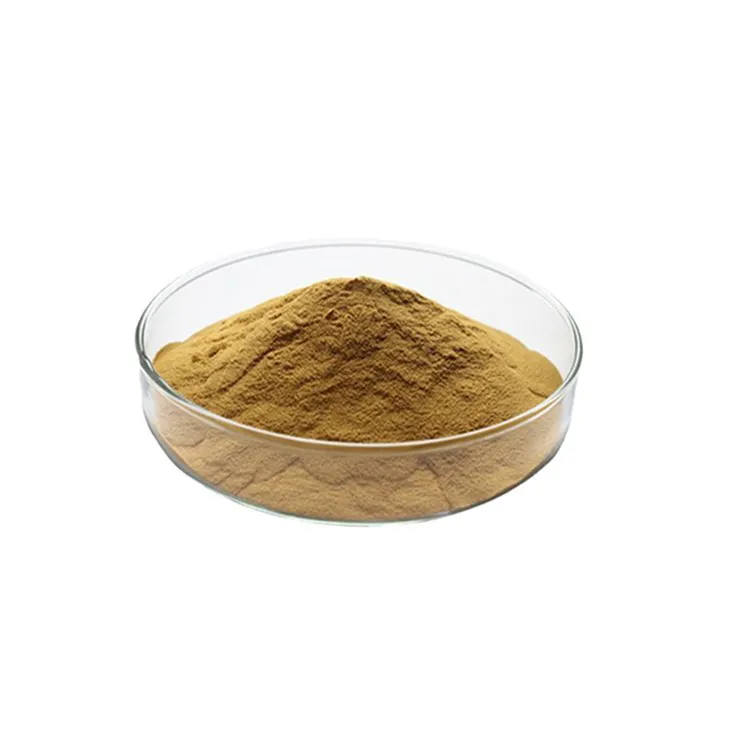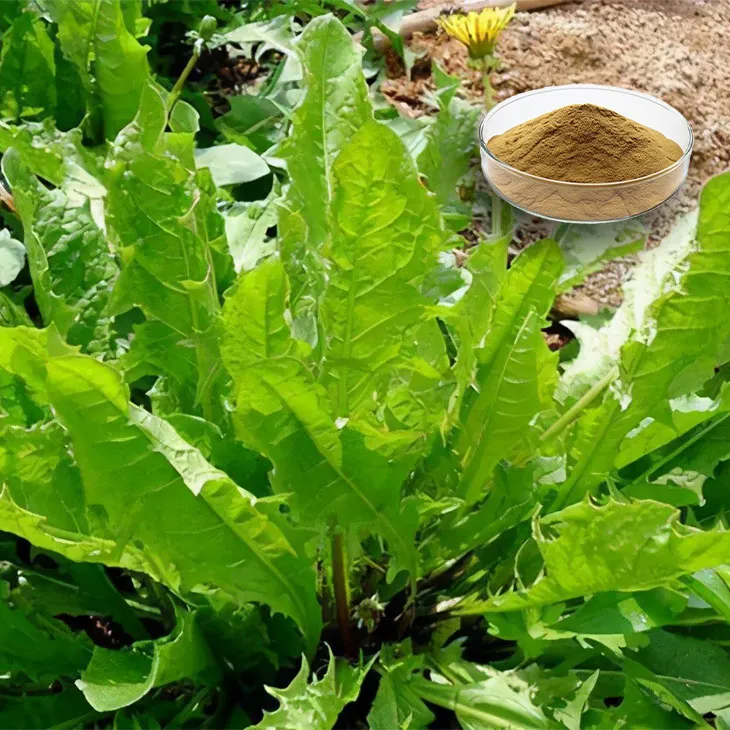- 0086-571-85302990
- sales@greenskybio.com
Extraction process of dandelion leaf extract.
2024-11-29

1. Introduction
Dandelion (Taraxacum officinale) has been used for centuries in traditional medicine across various cultures. Dandelion leaves are particularly rich in nutrients, bioactive compounds, and have shown potential in numerous applications, especially in the fields of health and cosmetics. The extraction of Dandelion Leaf Extract is a crucial step in harnessing these benefits. This article will explore the detailed extraction process, starting from the collection of the raw material - fresh dandelion leaves - to the final extract that can be utilized in different industries.

2. Collection of Fresh Dandelion Leaves
2.1. Identification
Before collecting dandelion leaves, it is essential to correctly identify the plant. Dandelions are easily recognizable by their characteristic yellow flowers, deeply toothed leaves, and hollow stems. However, it is important to ensure that the plants are not confused with other similar - looking but potentially toxic plants. Proper identification is the first step in obtaining high - quality Dandelion Leaf Extract.
2.2. Ideal Conditions for Collection
The best time to collect dandelion leaves is in the spring or early summer when the plants are young and tender. At this stage, the leaves are likely to have a higher concentration of active compounds. It is advisable to collect the leaves from areas that are free from pollution, such as meadows, fields, or uncultivated areas away from industrial zones, roadsides, and areas where pesticides or herbicides are commonly used. Leaves should be picked on a dry day, preferably in the morning after the dew has evaporated.
2.3. Harvesting Technique
When harvesting, it is recommended to use clean scissors or a small knife to cut the leaves at the base of the stem. This helps to ensure that the plant is not damaged unnecessarily and can continue to grow. It is also important to leave some leaves on the plant to allow it to photosynthesize and survive. Avoid pulling the leaves out by hand as this may uproot the entire plant or damage the root system.

3. Preparation of Dandelion Leaves for Extraction
3.1. Cleaning
Once the dandelion leaves are collected, they need to be thoroughly cleaned. This involves removing any dirt, debris, or insects that may be present on the leaves. The leaves can be gently rinsed under cold running water. It is important not to soak the leaves for a long time as this may cause the leaching of some water - soluble compounds. After rinsing, the leaves can be gently patted dry with a clean towel or allowed to air - dry in a well - ventilated area.
3.2. Sorting
After cleaning, the leaves should be sorted. Remove any damaged, discolored, or diseased leaves. Only healthy, green leaves should be selected for extraction. This helps to ensure the quality of the final extract. Sorting also allows for a more consistent extraction process as all the leaves used will be of similar quality.
3.3. Shredding or Chopping
The sorted dandelion leaves are then shredded or chopped into smaller pieces. This increases the surface area of the leaves, which in turn enhances the efficiency of the extraction process. The leaves can be shredded using a food processor, a blender, or by hand using a sharp knife. The size of the shredded or chopped pieces should be small enough to ensure good contact with the extraction solvent but not so small that they form a paste or sludge, which could impede the extraction process.

4. Main Extraction Methods
4.1. Maceration
- Maceration is one of the simplest and most commonly used methods for extracting Dandelion Leaf Extract. In this method, the shredded or chopped dandelion leaves are placed in a container, and a suitable solvent is added. Common solvents used for maceration include ethanol, methanol, water, or a combination of these. Ethanol is often preferred in the extraction of bioactive compounds as it can dissolve a wide range of polar and non - polar substances, and it is relatively safe to handle.
- The ratio of the leaves to the solvent is an important factor in maceration. A typical ratio could be 1:5 or 1:10 (leaves:solvent by weight). The container is then sealed and left to stand at room temperature for a period of time, usually from a few days to a few weeks. During this time, the solvent gradually penetrates the plant material, dissolving the desired compounds.
- Periodic shaking or stirring of the mixture can enhance the extraction efficiency. This helps to ensure that all parts of the plant material are in contact with the solvent and that the extraction process is more uniform. After the maceration period, the resulting liquid, which contains the dissolved compounds from the dandelion leaves, is separated from the solid plant material. This can be done using filtration methods such as gravity filtration through a filter paper or using a Buchner funnel for vacuum filtration.
4.2. Soxhlet Extraction
- The Soxhlet extraction method is a more continuous and efficient way of extracting dandelion leaf extract compared to maceration. In this method, the shredded dandelion leaves are placed in a Soxhlet thimble, which is then inserted into a Soxhlet apparatus.
- A suitable solvent, similar to the ones used in maceration (such as ethanol or a mixture of solvents), is placed in the extraction flask of the Soxhlet apparatus. The Soxhlet apparatus is then set up and heated. The solvent vaporizes, rises up through the sidearm of the apparatus, and condenses in the condenser. The condensed solvent then drips onto the plant material in the Soxhlet thimble, extracting the compounds from the dandelion leaves.
- The solvent containing the dissolved compounds then siphons back down into the extraction flask. This cycle of solvent evaporation, condensation, extraction, and siphoning back continues for a period of time, usually several hours. The advantage of the Soxhlet extraction method is that it uses a relatively small amount of solvent compared to maceration and can achieve a more complete extraction of the desired compounds.
- Once the extraction is complete, the solvent is removed from the extraction flask, usually by evaporation, leaving behind the dandelion leaf extract. However, it should be noted that Soxhlet extraction requires specialized equipment and may be more time - consuming to set up compared to maceration.
4.3. Supercritical Fluid Extraction
- Supercritical fluid extraction (SFE) is a relatively modern and advanced extraction method for dandelion leaf extract. In this method, a supercritical fluid, typically carbon dioxide (CO₂), is used as the extraction solvent. Carbon dioxide becomes supercritical at a certain temperature and pressure (above 31.1 °C and 73.8 bar).
- The supercritical CO₂ has properties that are intermediate between a gas and a liquid. It has a high diffusivity like a gas, which allows it to penetrate the plant material quickly, and a high density like a liquid, which gives it good solvent power. The shredded dandelion leaves are placed in an extraction vessel, and supercritical CO₂ is pumped into the vessel at the appropriate temperature and pressure.
- The supercritical CO₂ extracts the desired compounds from the dandelion leaves. The extract - laden CO₂ is then passed through a separator, where the pressure is reduced. As the pressure is reduced, the CO₂ returns to its gaseous state, leaving behind the extracted compounds. One of the main advantages of SFE is that it is a "green" extraction method as carbon dioxide is non - toxic, non - flammable, and can be easily removed from the final extract, leaving no solvent residues.
- However, SFE requires specialized and expensive equipment, and precise control of temperature and pressure is necessary. This method is also more suitable for the extraction of non - polar or moderately polar compounds, and additional co - solvents may be required for the extraction of more polar compounds.

5. Post - Extraction Processing
5.1. Concentration
After the extraction process, the resulting extract may be in a relatively dilute form. To obtain a more concentrated extract, various concentration methods can be used. One common method is evaporation, where the solvent is removed under reduced pressure or at a slightly elevated temperature. This helps to increase the concentration of the active compounds in the extract. However, care must be taken not to over - heat the extract as this may cause the degradation of some heat - sensitive compounds.
5.2. Purification
The extracted dandelion leaf extract may contain impurities such as other plant components, residual solvents, or unwanted by - products. Purification methods can be employed to remove these impurities. Chromatography techniques, such as column chromatography or high - performance liquid chromatography (HPLC), can be used to separate and purify the desired compounds in the extract. These techniques are based on the differential adsorption or partition of the compounds between a stationary phase and a mobile phase.
5.3. Storage
Once the dandelion leaf extract has been concentrated and purified, it needs to be stored properly to maintain its quality. The extract should be stored in a cool, dry, and dark place, preferably in an airtight container. This helps to prevent the degradation of the active compounds due to exposure to light, heat, or moisture. If stored correctly, the dandelion leaf extract can have a relatively long shelf - life and can be used for various applications in health, cosmetics, and other industries.
6. Conclusion
The extraction process of dandelion leaf extract involves several important steps, from the collection of fresh dandelion leaves to the final post - extraction processing. Each step plays a crucial role in obtaining a high - quality extract that can be utilized in different applications. Understanding these extraction methods and processes is essential for those interested in the potential of dandelion leaf extract in health, cosmetics, and other fields. As research on dandelion continues, new and more efficient extraction techniques may be developed, further enhancing the potential of this valuable plant resource.
FAQ:
What are the main steps in the extraction process of dandelion leaf extract?
The main steps include collecting fresh dandelion leaves first. Then comes the preparation of the leaves for extraction. Finally, the main extraction phase which can use methods like maceration.
Why is the collection of fresh dandelion leaves important in the extraction process?
Fresh dandelion leaves are important because they contain a higher amount of active compounds compared to wilted or damaged leaves. These active compounds are the main elements that are extracted for various applications in health, cosmetics, etc.
What is maceration in the context of dandelion leaf extract extraction?
Maceration is a process where the dandelion leaves are soaked in a solvent (usually a liquid like alcohol or water) for a period of time. This allows the solvent to dissolve and extract the desired compounds from the leaves.
Are there other extraction methods apart from maceration for dandelion leaf extract?
Yes, there are other methods. For example, Soxhlet extraction can also be used. This method is more efficient in continuously extracting the compounds from the leaves compared to maceration in some cases. Another method could be ultrasonic - assisted extraction which uses ultrasonic waves to enhance the extraction process.
How is the quality of the dandelion leaf extract affected by the extraction process?
The quality can be affected in several ways. The choice of extraction method can influence the purity and concentration of the active compounds. If the extraction time is too short in maceration, for example, not all the desired compounds may be extracted, leading to a lower - quality extract. Also, the type of solvent used can impact the quality as some solvents may extract unwanted substances along with the active ones.
Related literature
- Dandelion Leaf Extract: Properties and Extraction Methods"
- "Optimization of Dandelion Leaf Extract Extraction for Medicinal Applications"
- "The Science behind Dandelion Leaf Extract Extraction"
- ▶ Hesperidin
- ▶ citrus bioflavonoids
- ▶ plant extract
- ▶ lycopene
- ▶ Diosmin
- ▶ Grape seed extract
- ▶ Sea buckthorn Juice Powder
- ▶ Beetroot powder
- ▶ Hops Extract
- ▶ Artichoke Extract
- ▶ Reishi mushroom extract
- ▶ Astaxanthin
- ▶ Green Tea Extract
- ▶ Curcumin Extract
- ▶ Horse Chestnut Extract
- ▶ Other Problems
- ▶ Boswellia Serrata Extract
- ▶ Resveratrol Extract
- ▶ Marigold Extract
- ▶ Grape Leaf Extract
- ▶ blog3
- ▶ blog4
-
Nature's Bounty Vitamin K2
2024-11-29
-
Chinese Saffron Extract Powder Factory.
2024-11-29
-
Cactus Extract Supplier
2024-11-29
-
Optimal Bioavailability of Vitamin C.
2024-11-29
-
Extraction process of wheat germ extract.
2024-11-29
-
Bamboo Leaf extract
2024-11-29
-
Cranberry Extract
2024-11-29
-
Dandelion Root Extract
2024-11-29
-
Clove Powder
2024-11-29
-
Nettle leaf extract
2024-11-29
-
Artichoke Leaf Extract
2024-11-29
-
Avocado Extract Powder
2024-11-29
-
Red Vine Extract
2024-11-29
-
Saw Palmetto Extract
2024-11-29
-
Tamarind extract powder
2024-11-29





















